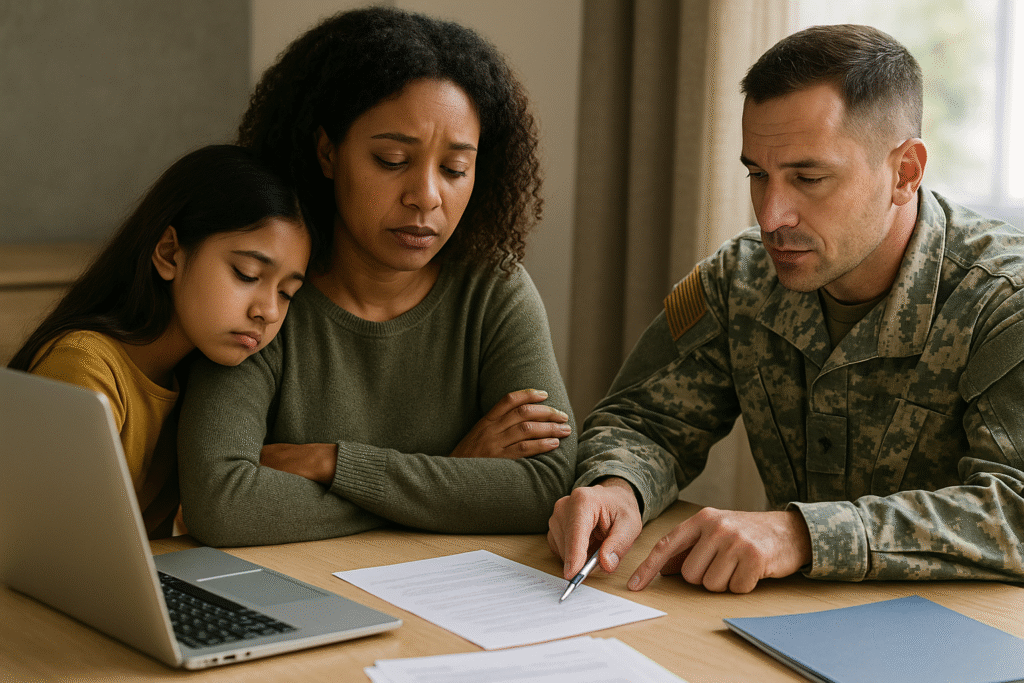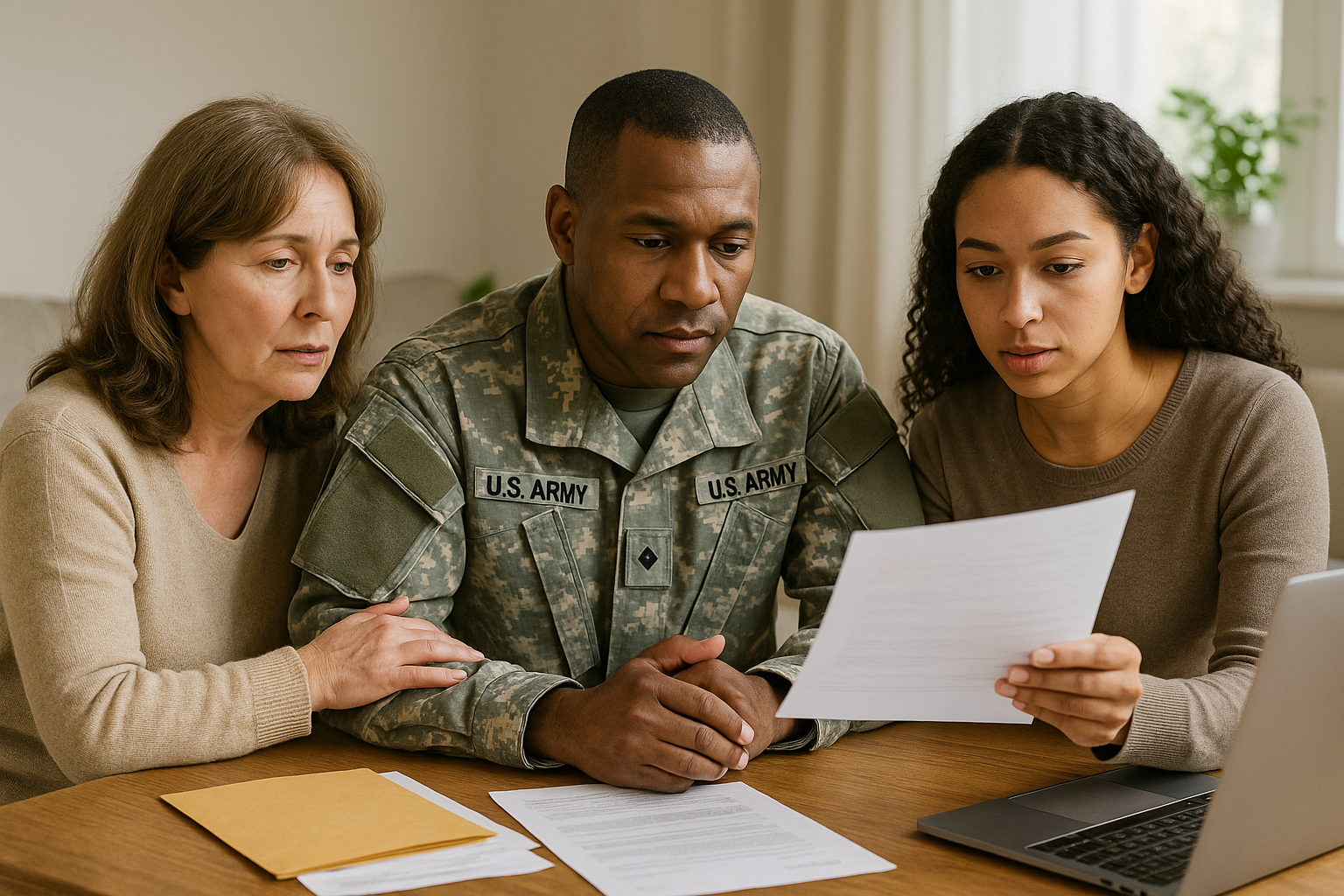Get Military survivor benefits with Ease: Losing a service member is heartbreaking — the paperwork shouldn’t make it harder. This practical, step-by-step guide helps survivors (spouses, children, parents) and retirees understand the main military survivor benefits and life-insurance programs, what to apply for, and how to get documents in order — updated with official guidance .
Quick overview: what survivors should know first
There are two broad categories survivors commonly use to Get Military survivor benefits with Ease:
- Monthly survivor payments and pensions (VA Survivors Pension; Dependency & Indemnity Compensation — DIC).
- Military retirement survivor annuities and life insurance (Survivor Benefit Plan (SBP), Reserve Component Survivor Benefit Plan (RCSBP), Servicemembers’ Group Life Insurance (SGLI) and Veterans’ Group Life Insurance (VGLI)).
Which programs you should pursue depends on the service member’s status at death (on active duty, retired, wartime veteran, or service-connected death). The sections below walk you through the high-impact actions to take right away.
Step 1 — Take the immediate practical steps (what to do in the first 72 hours)
- Notify the service member’s command or the VA regional office (if applicable). Agencies will start the paperwork and give you contacts.
- Locate key documents: the service member’s DD-214 (or equivalent), retirement orders (if applicable), SGLI policy info, and any VA disability rating letters. These are required for most survivor benefits.
- Ask for a local POC (DFAS or the appropriate service personnel office) who handles survivor claims and annuities. DFAS handles SBP/RCSBP annuity administration.
Step 2 — Determine which survivor payments you may qualify for
- VA Dependency and Indemnity Compensation (DIC): Paid to survivors when a veteran died from a service-connected injury or illness. Surviving spouses, children, and sometimes parents can qualify. Apply with VA Form 21P-534EZ or the parent form 21P-535 when applicable.
- VA Survivors Pension: For surviving spouses and unmarried dependent children of wartime veterans who meet income and net-worth limits. This is needs-based and different from DIC.
- SBP (Survivor Benefit Plan) and RCSBP: If the deceased was a retiree or eligible reservist who elected SBP/RCSBP, survivors may receive an annuity (a monthly payment) based on the retiree’s pay election. DFAS administers SBP/RCSBP.
Step 3 — File the correct claims and forms (don’t mix them up)
- DIC / Survivors Pension: Use VA Form 21P-534EZ for spouses/children (or 21P-535 for parents). Submit evidence: service records, death certificate, and any VA disability rating documents.
- SBP/RCSBP claims: Contact DFAS or the service branch’s personnel/retirement office to report the death and file SBP claims. DFAS provides instructions, required forms, and what documentation you must submit.
- Life insurance (SGLI/VGLI/FSGLI): SGLI is automatic for qualifying active-duty members; family coverage (FSGLI) and VGLI (conversion after separation) have separate application rules and time limits. Apply for VA insurance benefits as soon as possible and attach the member’s SGLI policy information.

Step 4 — Understand timing, deadlines and premium/coverage rules
- VGLI deadline: Veterans have up to 1 year and 120 days after separation to apply for VGLI; applying within 240 days avoids a health-evidence requirement. If the veteran died after separation but before converting to VGLI, survivors may have special rules — check VA guidance.
- SBP premiums and elections: SBP premiums are typically deducted from retired pay (or charged differently for RCSBP). If the deceased elected SBP, survivors will get annuity payments after DFAS processes the claim. Keep copies of premium election letters and retiree documents.
Step 5 — What evidence and documentation are most important
Prepare and submit:
- Certified death certificate(s).
- DD-214 or other separation/retirement documentation.
- VA disability rating letters (for DIC).
- Marriage certificate and children’s birth certificates (to verify relationships).
- Any SBP election or SGLI policy records.
Uploading clean, legible scans speeds processing. Keep originals and certified copies in a safe place.
Step 6 — Use the right offices and get help if you’re stuck
- VA regional offices for DIC and Survivors Pension applications and claims.
- DFAS (Defense Finance and Accounting Service) for SBP/RCSBP annuities and retired-pay matters.
- Service casualty assistance officers and base personnel offices — they can help with immediate logistics and paperwork. If you need help filing or appealing denials, accredited veterans’ service organizations (like VSO counselors) can assist free of charge.
Step 7 — Keep records, appeal if necessary, and watch for related benefits
- If a claim is denied or underpaid, survivors can request an appeal or request a review. Keep a dated log of all calls, POCs, forms submitted, and confirmation numbers.
- Other benefits to check for: burial allowances, education assistance for surviving dependents, and state-level survivor benefits (some states add support). Combined benefits rules can be complex (e.g., receiving DIC may affect pension eligibility), so verify which payments you will actually receive and whether offsets apply.
Practical Checklist (copyable)
- Obtain certified death certificate.
- Locate DD-214, retirement orders, VA disability letters, SGLI info.
- File VA Form 21P-534EZ (spouse/children) or 21P-535 (parents) if applicable.
- Contact DFAS/service POC for SBP/RCSBP annuity claims.
- Submit SGLI / FSGLI / VGLI claims or applications as applicable.
- Keep organized copies and note all contact names, dates, and reference numbers.
Short FAQ
Q: What’s the difference between DIC and Survivors Pension?
A: DIC is for survivors of veterans who died from service-connected causes (or veterans rated totally disabled before death). Survivors Pension is a needs-based benefit for surviving spouses/children of wartime veterans who meet income/net-worth limits.
Q: My spouse was a retiree and had SBP — will I automatically get payments?
A: Not automatically; you must file the SBP claim with DFAS and provide required documentation. If SBP was elected, survivors typically receive an annuity after DFAS processes the claim.
Final tips & compassion
Start with one benefit at a time — typically DIC or Survivors Pension and SBP. Use DFAS and VA POCs and don’t hesitate to reach out to accredited VSOs for free filing help. Keep one folder (digital + paper) with all documents — it makes a world of difference during a stressful time.
Disclaimer
This post provides general informational guidance based on official federal resources. It is not legal, financial, or medical advice. Rules and program details change; always confirm eligibility, deadlines, and forms on official agency websites listed below before filing claims. Images used in this article are royalty‑free or licensed for commercial use and are provided here for illustrative purposes.
Helpful official links (clickable)
- USA.gov — Military survivor benefits and life insurance (source for this article).
https://www.usa.gov/military-survivor-benefits. (USAGov) - DFAS — Survivor Benefit Plan (SBP) / RCSBP information & claims.
https://www.dfas.mil/RetiredMilitary/provide/sbp/ and https://www.dfas.mil/RetiredMilitary/provide/rcsbp/. (DFAS) - VA — Survivors Pension overview and how to apply.
https://www.va.gov/family-and-caregiver-benefits/survivor-compensation/survivors-pension/. (Veterans Affairs) - VA — Dependency and Indemnity Compensation (DIC) details & forms.
https://www.va.gov/family-and-caregiver-benefits/survivor-compensation/dependency-indemnity-compensation/. (Veterans Affairs) - VA — SGLI, VGLI, and FSGLI life insurance pages (conversion rules and deadlines).
https://www.va.gov/life-insurance/options-eligibility/sgli/ and https://www.va.gov/life-insurance/options-eligibility/vgli/. (Veterans Affairs)
